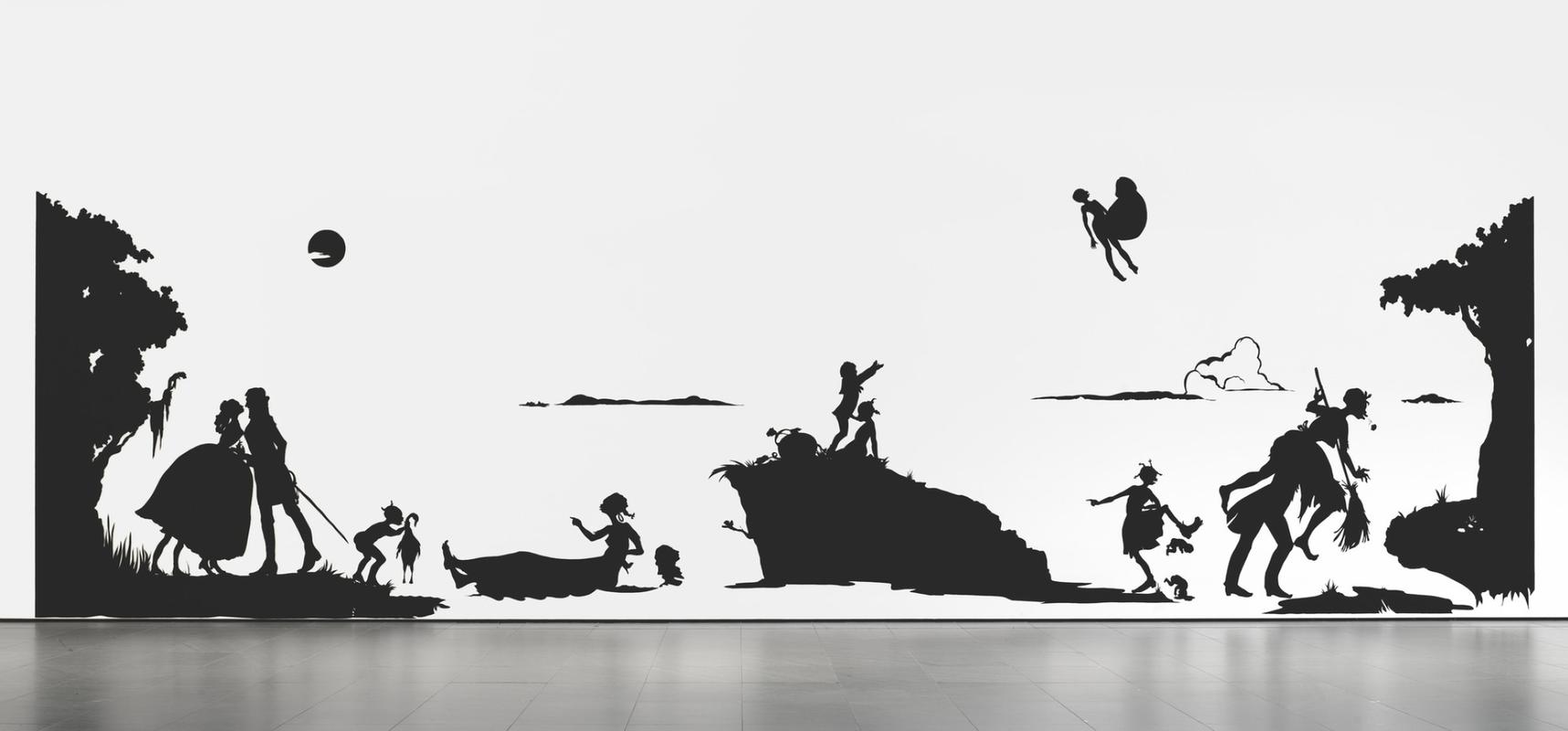More about Gone: An Historical Romance of a Civil War as It Occurred b'tween the Dusky Thighs of One Young Negress and Her Heart

Contributor
“The silhouette says a lot with very little information. But that’s also what the stereotype does.” That was Kara Walker’s response to criticism of her style of art which depicts surreal versions of recognizable, often offensive historical moments.
This is certainly true about Walker’s paper-made wall installation Gone: An Historical Romance of a Civil War as It Occurred b'tween the Dusky Thighs of One Young Negress and Her Heart. That’s a title that wears you down by the time you get to the end, much like how you’re feeling by the time the initially innocent-looking silhouettes in this work become clear, and your perspective of this piece completely changes.
Gone is a gigantic wall installation made up of cut-out pieces of paper that present a "story time" experience for the audience. The only problem is when quickly realize that this isn’t going to be a very nice story. There are enslaved people on leashes, underage fellatio, a floating man with a severely swollen penis, and a woman giving birth standing up while her newborn children plop onto the ground. It’s grotesque and surreal, but it’s based on the types of stories we all know to be true about slavery and the Antebellum South. Did all these things happen exactly as they’re depicted in this piece? Probably not. But the reality is not that far off, either.
Gone’s title references two different written works that depict slavery and prejudice. There’s Margaret Mitchell’s Gone With The Wind, which was set during the Civil War, and Thomas Dixon Jr’s The Clansman. If you’re familiar with either of these books, then you might realize why they only help to reinforce the visual narrative that Walker has put on display. The title is there to provide context. That’s the thing about silhouettes, they can only show so much. They’re stark and static images with no detail, yet we still seem to understand exactly what they are because our mind fills in the rest. Using this form of art while talking about this particular part of American history, enables the audience to have a certain level of agency, or even complicity, when viewing the work, as it is ultimately the viewer's imagination that fills in the blanks
Gone was the piece that put Walker on the map, and from then on, it kind of became her signature style. For better or for worse, whether you liked the message she was sending or not, it was undeniable that this type of art had never been seen before. Sure, silhouetting might have been a 19th-century style of art that many deemed “feminine,” but it hadn’t been used in the mainstream for a long time, and it definitely wasn’t used as a way to look at the past with a renewed critical perspective. The technique itself is then another way that Walker borrows from, and engages with history.
With its size, subject matter, and medium, Gone allows the audience to be completely immersed in this absolutely insane narrative. Each vignette is isolated within the larger scene, and as our eyes move from left to right, like they do when reading a story, we gawk at the suggested tableaux, each more disturbing than the last. It forces us not just to look at the ugly past, but to actively confront versions of what enslaved African Americans had to go through on a daily basis.
Sources
- Art21. “The Melodrama of ‘Gone With the Wind” September, 2003. Accessed August 18, 2020. https://art21.org/read/kara-walker-the-melodrama-of-gone-with-the-wind/
- Britannica. “Kara Walker - American Artist” Accessed August 18, 2020. https://www.britannica.com/biography/Kara-Walker#ref1247051
- Sargent, Antwaun. “Kara Walker Showed Me the Horror of American Life” Vice. November 12, 2017. https://www.vice.com/en_us/article/59ywgz/kara-walker-showed-me-the-hor…
- The Art Story. “Kara Walker Artworks” Accessed August 18, 2020. https://www.theartstory.org/artist/walker-kara/artworks/#pnt_2











